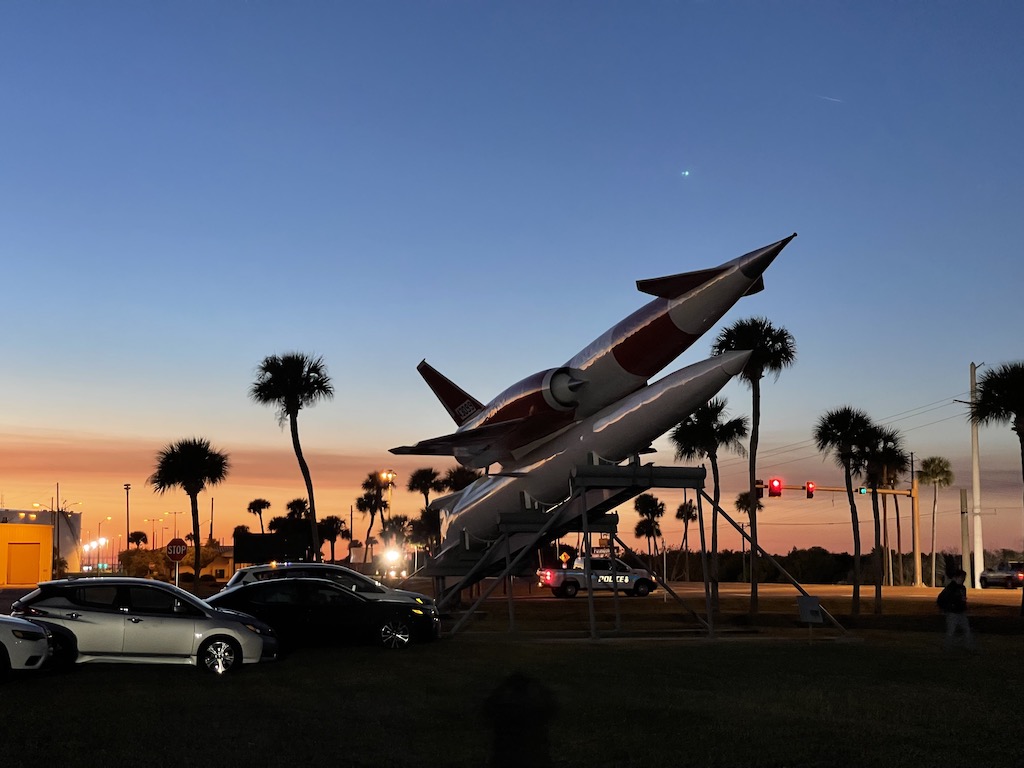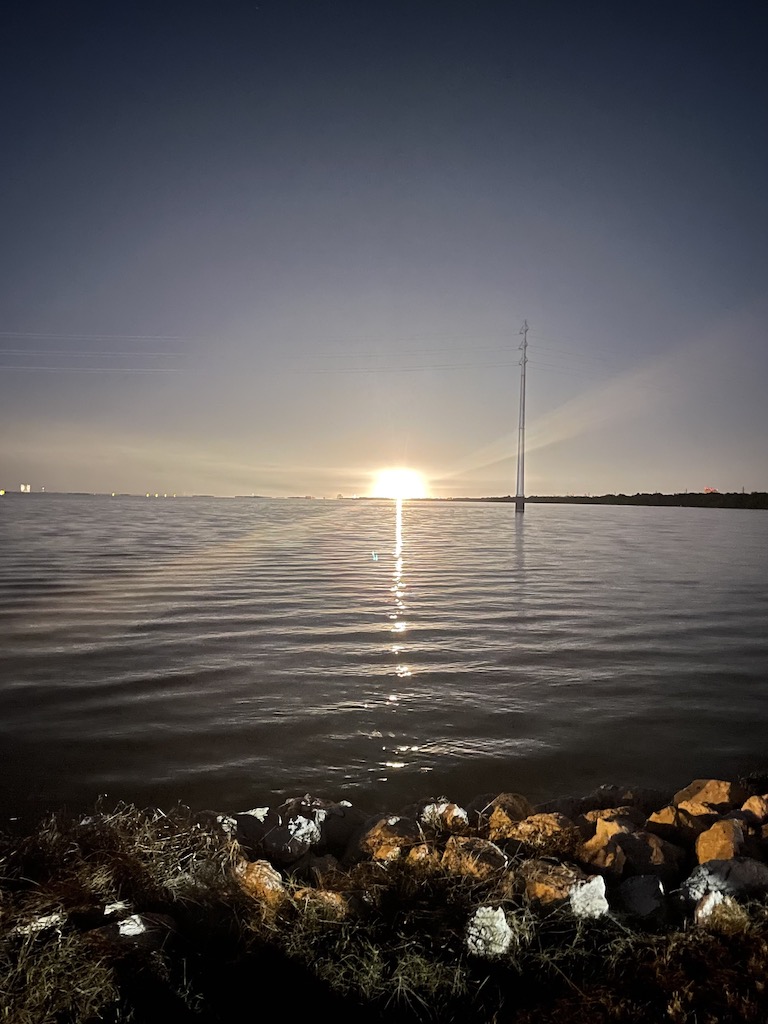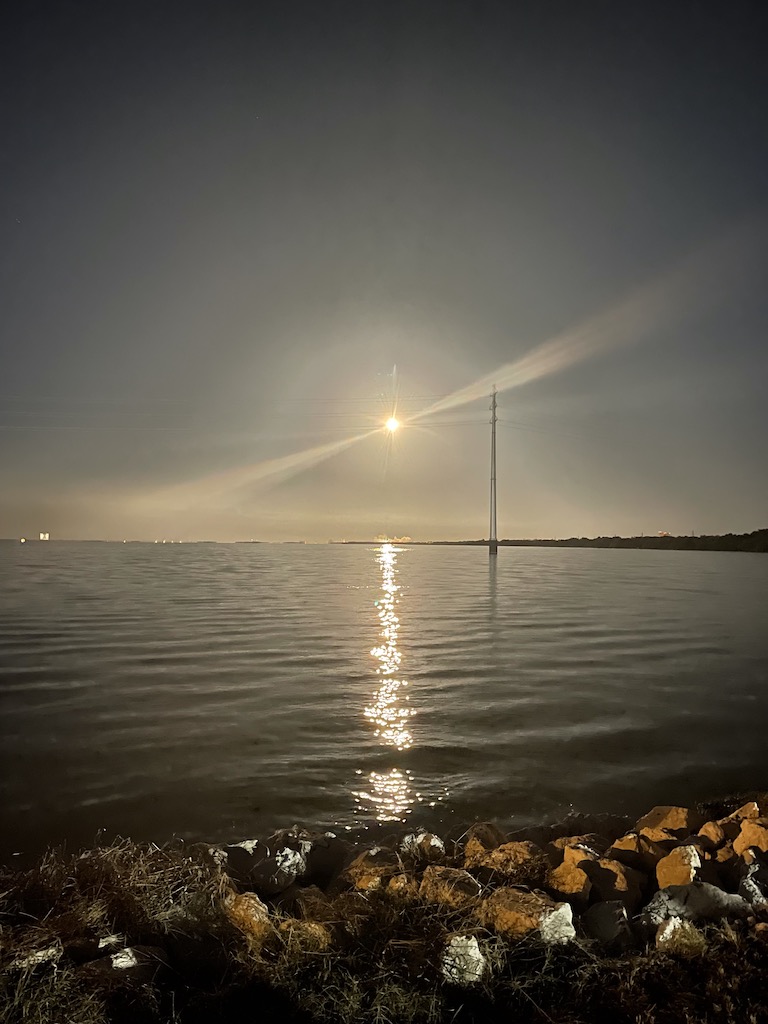During a recent trip to Orlando, my family was able to visit the Space Coast and see a SpaceX rocket launch from Cape Canaveral.
If you are considering booking travel or signing up for a new credit card please click here. Both support LiveAndLetsFly.com.
If you haven’t followed us on Facebook or Instagram, add us today.
Making Dreams Possible
Since participating in an International Space Station mission in middle school (more than 20 years ago), I have been fascinated with space technology and our place in the stars. Between the 1960s and 1980s very little progress was made in the advancements of human spaceflight, and the world went even more dormant until the ISS was built.
Elon Musk, Jeff Bezos, and Richard Branson have been competing to bring the next wave of innovation with three separate vehicles and companies. SpaceX has demonstrated the most substantial progress and is the most inspiring to me personally.
Despite watching dozens of launches live online, and even racing outside to see the distant glow in Fort Myers, Florida from rockets launched more than a hundred miles away from the Kennedy Space Center, I’d never seen one in person.
Not until now.
The stars aligned and my family was able to race to see a space launch just after dusk on December 1st, 2021. It was awe-inspiring for all of us and a moment my family won’t soon forget.

Viewing A Rocket Launch
For those who would like to view a space rocket launch, Cape Canaveral remains the best possible location for easy viewing. Consider the following tips. I use Space Launch Schedule (an app/website to view upcoming launches) which helps me not only watch them online but keeps me up to date on changes to the launch window. In this case, the SpaceX Falcon 9 rocket was scheduled to launch the prior day but it was delayed for a day, saving us the drive out to the coast.
There are many places from which to view the launch pad at a safe distance. We chose this one with some limited stadium-style seating, as well as organized parking and staff who also ensured safe passage for pedestrians across the road.
The launch complex is several miles away but this area was safe, easy, and free to visit. Parking for this location is at the entry to the Cape Canaveral Space Force Base (the only one for which I am aware) and is the last point before visitors would enter the base.

For amateur space geeks like myself, being able to see the adjacent SpaceX building was also a plus, though it was merely from the outside.
Rocket launch visitors should allow themselves approximately an hour to reach the viewing area if departing central Orlando. Some additional time for parking is necessary as well. If visitors want to set up a space telescope, video equipment, or secure the best seats, allow additional time for transit and setup.
During our perfectly clear evening, this was the view we had.
I stopped recording the launch as the sound began to roll in, a shock that it took as long as it did. It wasn’t the thundering booms the rocket gave off that drew my hands down, it was simply that the images did no justice to the experience in person. I have found that I waste more time trying to get the shot I want and watching it from my iPhone as I film it, rather than being present and seeing what’s in front of me with my own two eyes. I’d recommend visitors do the same.
Future Launches From Cape Canaveral
Cape Canaveral is experiencing a renaissance. In 2020, despite obvious challenges, SpaceX alone put a rocket in the sky nearly once every two weeks. Already this year the company has used its Crew Dragon spacecraft on both a test flight to the international space station as well as ferrying humans (twice) and the world’s first all-civilian mission. Musk’s company has flown several SpaceX Falcon Heavy rockets with larger satellites and cargo resupply missions.


SpaceX isn’t alone at the Cape. The United Launch Alliance Atlas rocket is slated to take its CST-100 Starliner spacecraft to the heavens and beyond with potential lunar mission support in the future. The project has been behind and over budget but has retained its contract with NASA and the government.
Blue Origin is also investing in launches from Cape Canaveral in the coming months and years.
Conclusion
Experiencing the raw power of rockets climbing out of our atmosphere was a triumph. To view for myself but also with my family, the engineering marvels, the bravery, and the fortitude to dream, finance, build and fly such a feat were inspiring. Remembering to put down the camera from time to time is a salient and important part of the experience too.
What do you think? Have you seen a rocket launch from Cape Canaveral?




Space flight didn’t accomplish much from the 1960-1980s? Wtf!! Apolo? The space shuttle? Common!. Other then that good article
I live in Cape Canaveral and watch them all the time. It never gets old. A Falcon Heavy is slatted for sometime in January, and it is really something to see. About 7 to 10 minutes after the rocket takes off, 2 of the 3 of the booster rockets land back on the base, accompanied by several sonic booms. It will take your breath away.
The launch viewing area you speak of had been closed for over a year. Did you really watch a launch from there recently??? Were there very many people there???
@Jeane Riley – I can confirm that it’s most definitely open with staff or volunteers lining up parked cars on the nearby lawn and helping people across the street. There were about 50 people there (you can see and hear others in the video) and the bleachers were available.
I remember going on one of the tours back in 89. We got lucky enough to see the tractor that got the space shuttles into launch position in operation. Sadly missed any launches
** Between the 1960s and 1980s very little progress was made in the advancements of human spaceflight, and the world went even more dormant until the ISS was built. **
Kyle, I’m a little confused by the text that I quoted above from the beginning of your article.
The 1960s-mid 1970s was arguably the period in which the greatest advancements in human spaceflight occurred. The Mercury, Gemini, Apollo, and Skylab programs all advanced our ability to travel beyond this big blue marble that we inhabit.
And of course the Space Shuttle program, even with the two disasters (which I witnessed as they happened), allowed us to advance our collective knowledge of frequent space travel. This program was the precursor to what Musk, Bezos, et al are working towards now.
Your “very little progress” comment is bewildering to me.